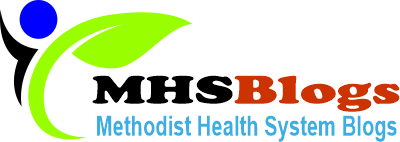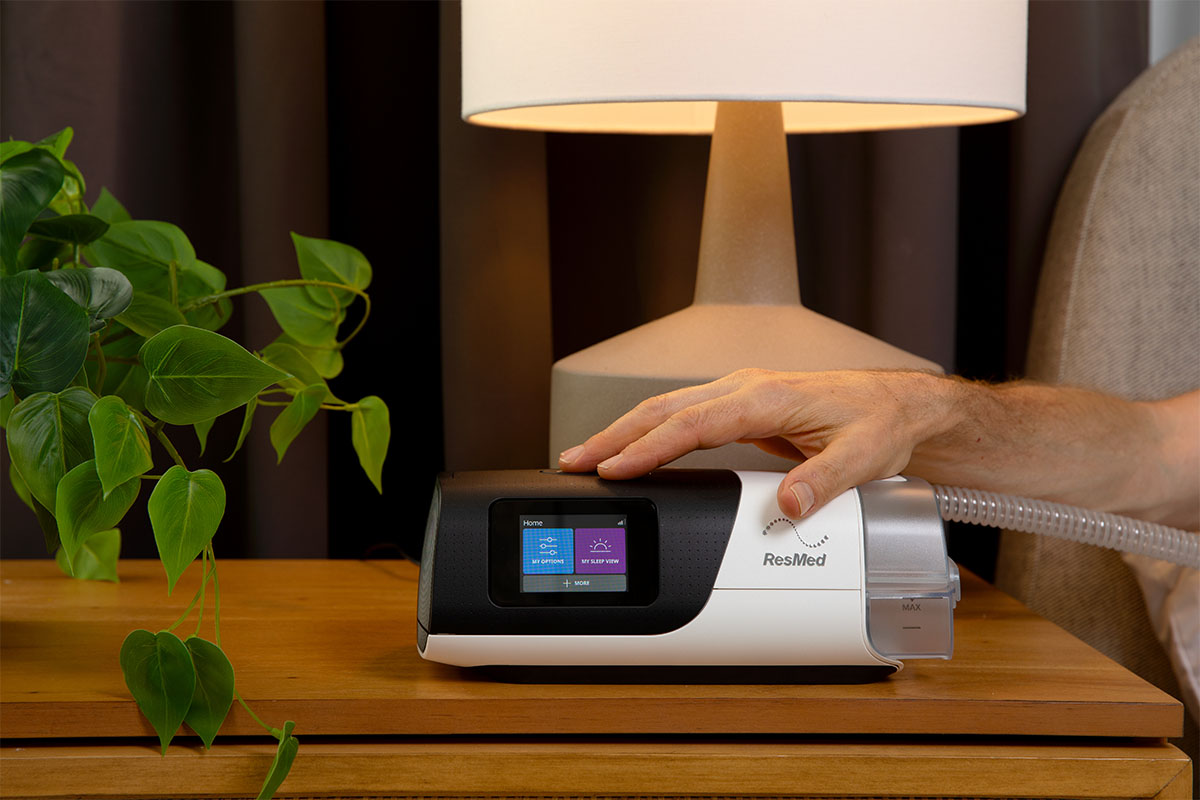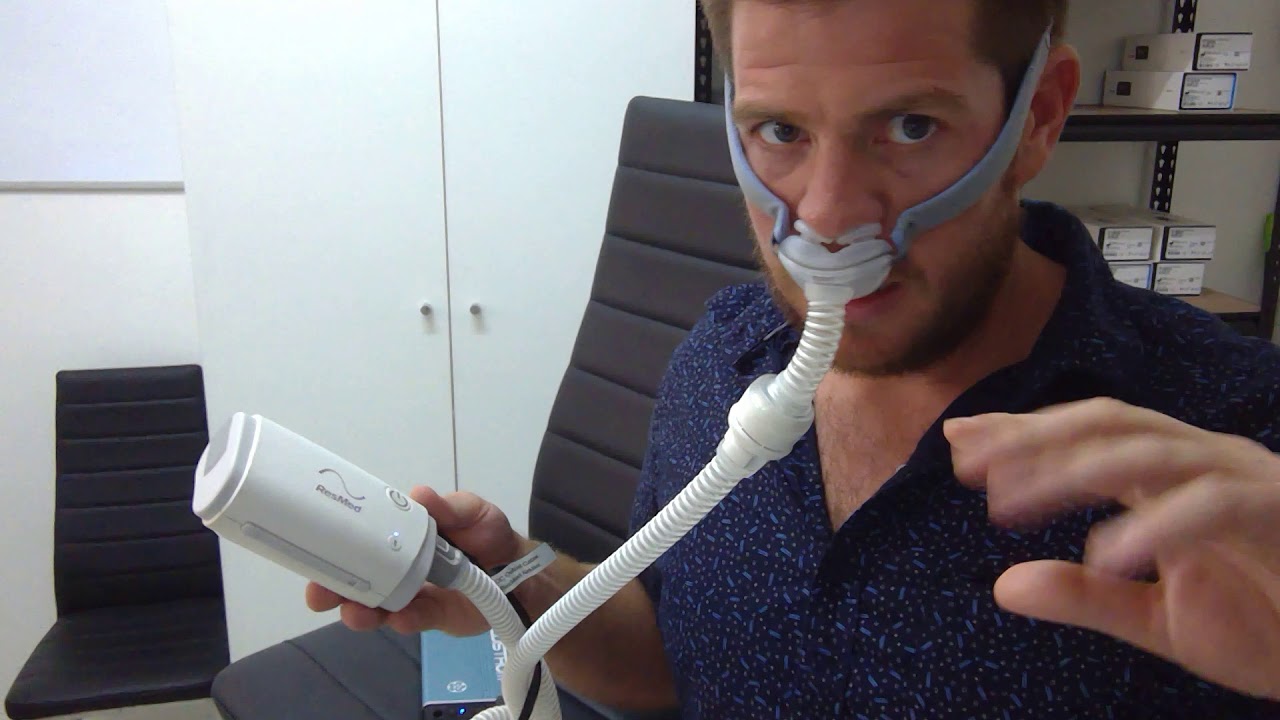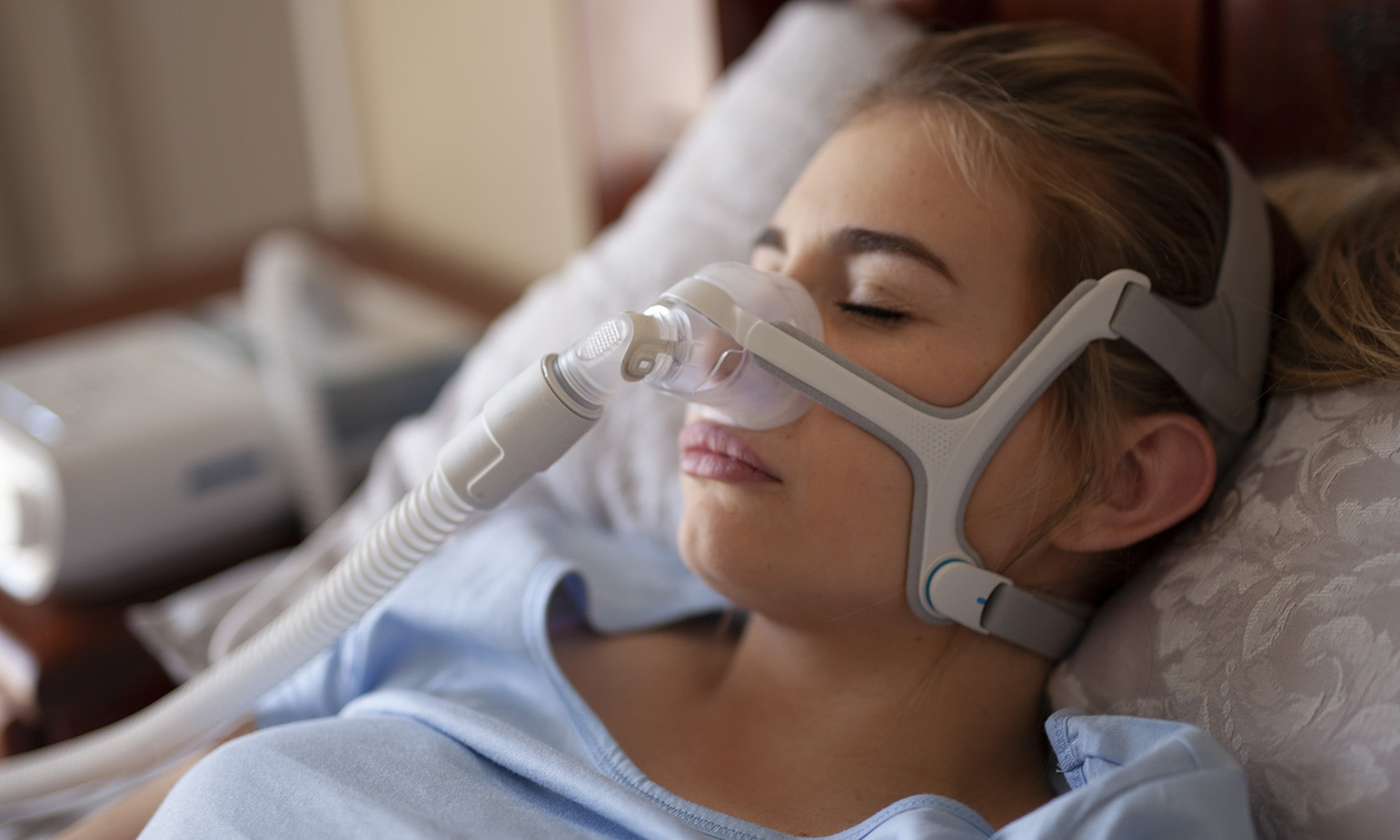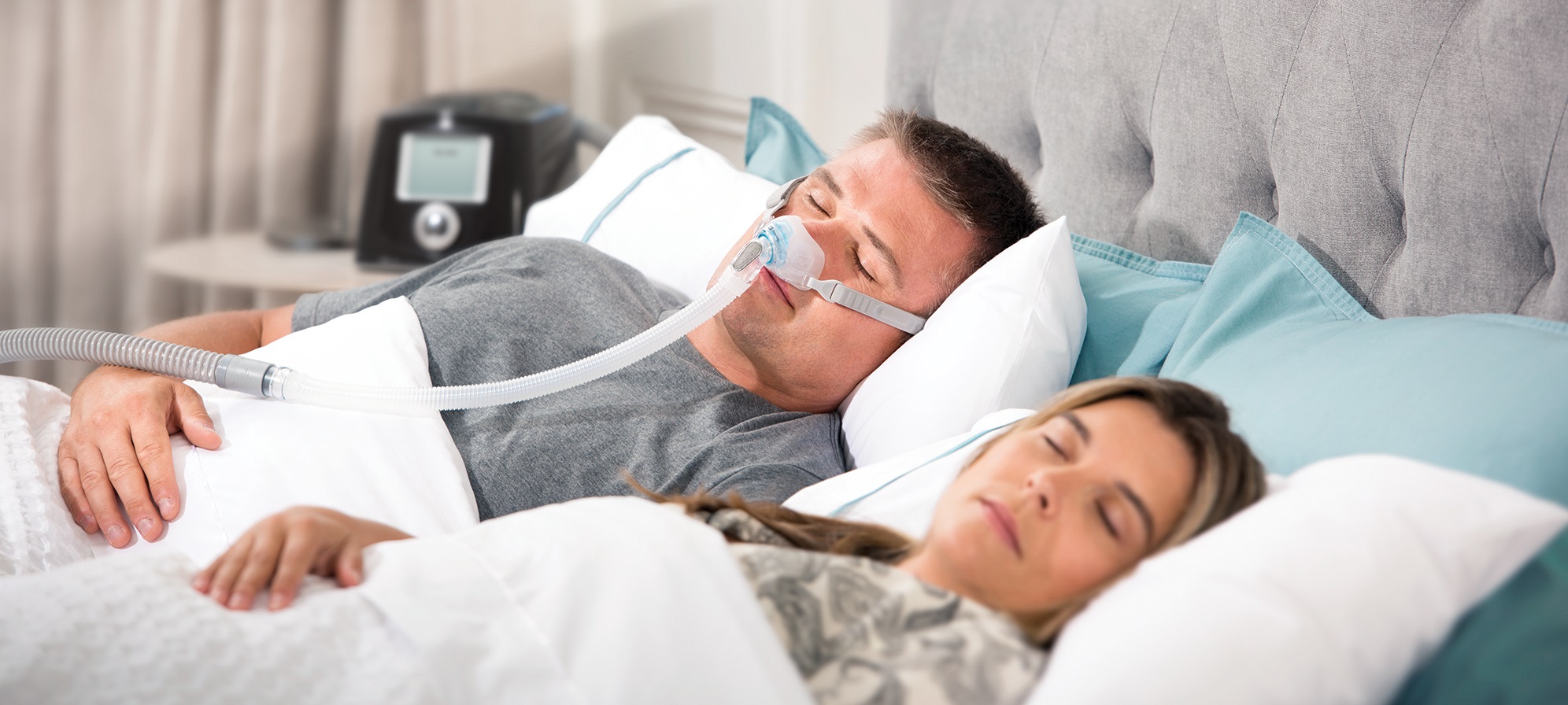Tag: cpap machines online
ResMed AirMini vs Traditional CPAP Machines: A Comparative Analysis
In the world of sleep apnea treatment, Continuous Positive Airway Pressure (CPAP) therapy has proven to be highly effective in improving the quality of sleep for patients. CPAP machines work by providing a constant flow of air to keep the airways open during sleep. This helps to prevent pauses in breathing and the associated disruptions in sleep patterns.
Understanding CPAP Therapy
Sleep apnea is a sleep disorder characterized by repeated pauses in breathing during sleep. These pauses, known as apneas, can last for a few seconds to minutes and can occur multiple times throughout the night. This interrupts the natural sleep cycle, leading to poor sleep quality and increased daytime fatigue.
CPAP machines are one of the most common and effective treatments for sleep apnea. By delivering a continuous flow of pressurized air through a mask, CPAP therapy helps to keep the airways open and prevent the collapse or obstruction that causes apneas.
When a person with sleep apnea uses a CPAP machine, the pressurized air acts as a splint, holding the airways open and allowing for uninterrupted breathing. This not only improves the quality of sleep but also reduces the risk of serious health complications associated with untreated sleep apnea. Click here to get tips for optimizing your experience with the ResMed AirMini.
The Role of CPAP Machines in Sleep Apnea Treatment
CPAP machines play a crucial role in sleep apnea treatment by providing the necessary air pressure to keep the airways open. By doing so, they help to reduce or eliminate sleep apnea symptoms, such as loud snoring, daytime fatigue, and morning headaches.
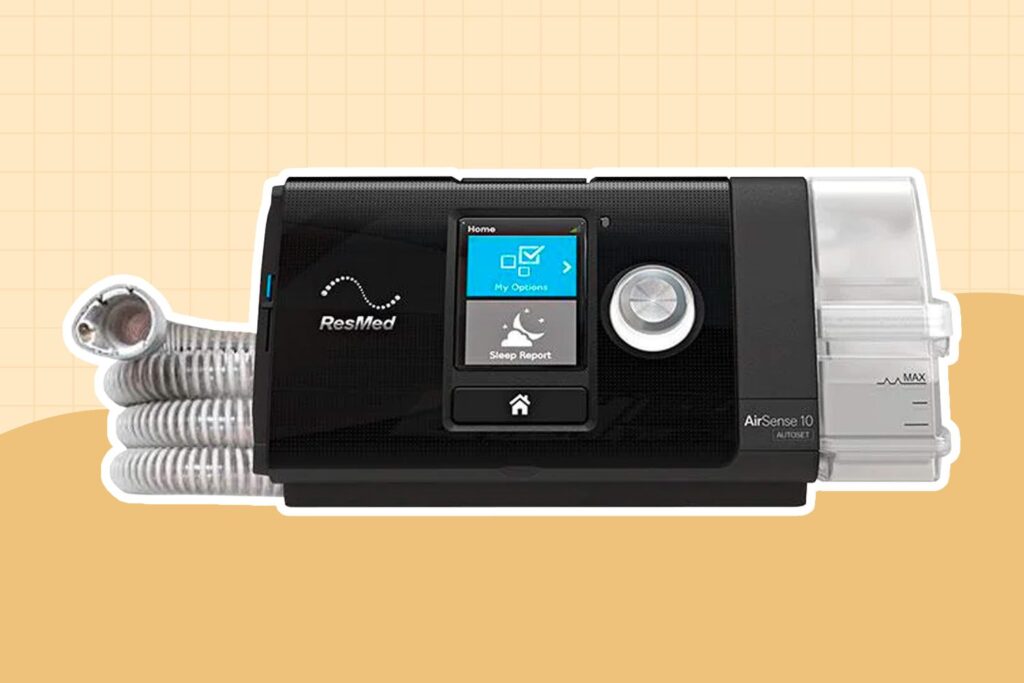
Moreover, CPAP therapy has been shown to improve overall sleep quality and reduce the risk of associated health complications, including cardiovascular issues and cognitive impairment. By ensuring that the body receives the oxygen it needs during sleep, CPAP machines help to optimize bodily functions and promote better overall health.
It is important to note that CPAP therapy is not a cure for sleep apnea but rather a management tool. Continuous use of the CPAP machine is necessary to maintain the benefits and alleviate the symptoms of sleep apnea.
Key Features of a Standard CPAP Machine
A standard CPAP machine typically consists of a motor, air filters, a humidifier, and a mask. The motor generates the air pressure, while the air filters remove impurities from the air. The humidifier adds moisture to the air, reducing potential dryness and discomfort.
The mask, which comes in various styles and sizes, is worn over the nose, the mouth, or both, depending on the individual’s needs. It creates a seal that allows the pressurized air to be delivered effectively.
Modern CPAP machines often come with additional features to enhance comfort and usability. These may include adjustable pressure settings, ramp-up features that gradually increase the pressure to help users fall asleep, and data tracking capabilities that allow users and healthcare providers to monitor treatment effectiveness.
Choosing the right CPAP machine involves considering factors such as individual comfort, mask fit, noise level, and ease of maintenance. It is important to consult with a healthcare professional or sleep specialist to determine the most suitable CPAP machine for each individual’s specific needs and preferences.
Regular maintenance and cleaning of the CPAP machine are essential to ensure its optimal performance and longevity. This includes regularly replacing the air filters, cleaning the mask and humidifier, and inspecting the tubing for any signs of wear or damage.
Overall, CPAP therapy is a highly effective and widely used treatment for sleep apnea. By providing a continuous flow of pressurized air, CPAP machines help to keep the airways open and alleviate the symptoms of sleep apnea, leading to improved sleep quality and better overall health.
Introduction to ResMed AirMini
ResMed AirMini is a revolutionary CPAP machine that offers a compact and portable solution for sleep apnea treatment. Designed with the needs of frequent travelers and individuals on the go in mind, the AirMini packs the power and performance of a traditional CPAP machine into a small and lightweight package.
Living with sleep apnea can be challenging, especially when it comes to maintaining a consistent treatment routine. However, with the ResMed AirMini, users can now enjoy the benefits of a reliable CPAP machine while on the move. Whether you’re embarking on a business trip or exploring new destinations, the AirMini ensures that your sleep apnea therapy remains uninterrupted.
Let’s dive deeper into the design and portability of the ResMed AirMini.
Design and Portability of ResMed AirMini
The ResMed AirMini stands out with its sleek and compact design. It weighs less than a pound and is roughly the size of a smartphone, making it incredibly easy to carry during travel or on a daily basis. Its portability allows users to maintain their CPAP therapy routine even when away from home.
Imagine being able to slip your CPAP machine into your pocket or carry it in your handbag effortlessly. With the AirMini, this becomes a reality. Its compact size not only makes it convenient to transport but also discreet, ensuring that you can use it without drawing unnecessary attention.
Additionally, the AirMini features a universal power supply, enabling it to be used internationally without the need for additional adapters or converters. This simplifies the travel experience for users who frequently move between different countries.
No matter where your adventures take you, the AirMini ensures that you can continue your sleep apnea treatment without any hassle.
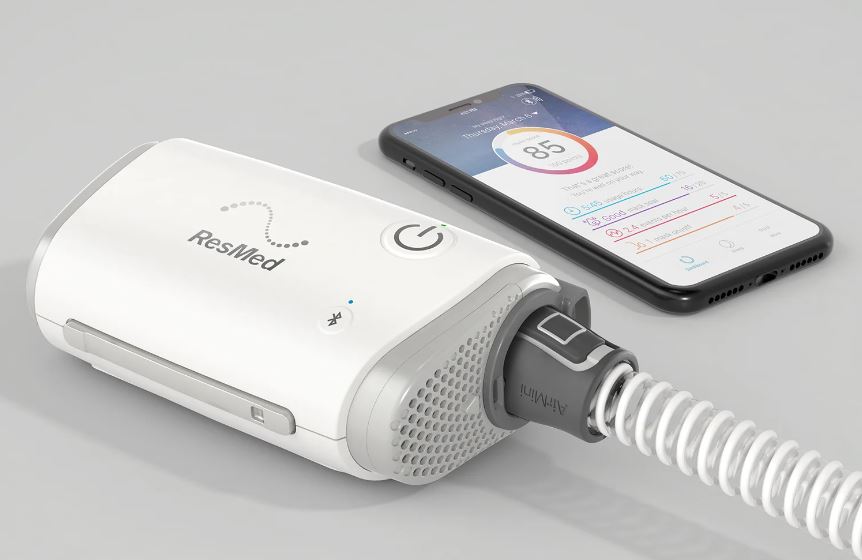
Unique Features of ResMed AirMini
Despite its small size, the ResMed AirMini offers a wide range of features and functionalities that enhance the overall user experience. It utilizes advanced algorithms to automatically adjust the pressure levels based on each individual’s breathing patterns, ensuring optimal therapy efficacy.
Customizing your CPAP therapy to suit your unique needs has never been easier. The AirMini’s intelligent technology adapts to your breathing rhythm, providing you with the right amount of pressure at the right time. This personalized approach ensures maximum comfort and effectiveness, allowing you to wake up feeling refreshed and energized.
The AirMini also incorporates wireless connectivity, allowing users to easily monitor their sleep patterns and therapy progress on their smartphones. This connectivity feature enables seamless data tracking and remote support, providing users with valuable insights into their sleep apnea treatment.
By connecting the AirMini to the dedicated mobile app, you can access detailed sleep reports, view your therapy history, and even receive personalized tips for improving your sleep quality. This integration of technology and healthcare empowers users to take control of their sleep apnea treatment and make informed decisions about their well-being.
With the ResMed AirMini, you no longer have to compromise on the quality of your sleep apnea therapy. Its compact size, intelligent features, and wireless connectivity make it a game-changer in the world of CPAP machines.
Comparing ResMed AirMini and Traditional CPAP Machines
When it comes to choosing a CPAP machine, there are several factors to consider. While the ResMed AirMini offers many advantages in terms of size and portability, it’s essential to compare it with traditional CPAP machines to determine if it meets the same standards of performance and effectiveness.
Let’s dive deeper into the comparison between the ResMed AirMini and traditional CPAP machines to understand their differences and benefits.
Size and Weight Comparison
One of the most noticeable differences between the ResMed AirMini and traditional CPAP machines is their size and weight. A standard CPAP machine typically weighs around 4 to 6 pounds and occupies a significant amount of space on a bedside table or nightstand.
On the other hand, the ResMed AirMini is exceptionally lightweight and compact. Weighing only a few pounds, it easily fits into a small bag or carry-on luggage. This makes the AirMini an ideal choice for travelers or individuals with limited space at home, as it allows for hassle-free transport and storage without compromising on therapy performance.
Despite its small size, the AirMini doesn’t compromise on functionality. It offers the same therapeutic benefits as traditional CPAP machines, ensuring effective treatment for sleep apnea.
Noise Level Comparison
Noise level is another crucial factor to consider when evaluating CPAP machines. Traditional CPAP machines often generate noticeable noise, which can disrupt sleep, especially for light sleepers or users sharing a bedroom.
In contrast, the ResMed AirMini utilizes advanced noise reduction technology. This technology minimizes noise levels to ensure a quiet and peaceful sleep environment. With the AirMini, you can sleep soundly without being disturbed by the noise generated by the machine.
This feature not only benefits the user but also their sleeping partner, ensuring a restful night’s sleep for both.
Comfort and Ease of Use
Comfort and ease of use are paramount considerations when it comes to CPAP therapy. Traditional CPAP machines can be bulky and may cause discomfort due to their size and the way the air pressure is delivered.
The ResMed AirMini, on the other hand, offers a more streamlined and user-friendly experience. Its lightweight and compact design make it less obtrusive, allowing for a more comfortable sleep experience. Additionally, …
Read MoreTips for Optimizing Your Experience with the ResMed AirMini
The ResMed AirMini is a compact and convenient device that offers a host of features to enhance your sleep experience. Whether you are new to using this device or looking for ways to improve your current setup, this article will provide you with valuable tips and information. Read on to discover how you can optimize your experience with the ResMed AirMini.
Understanding the Features of the ResMed AirMini
Overview of the ResMed AirMini
The resmed airmini is a portable CPAP machine designed to deliver therapeutic air pressure for individuals with sleep apnea. It is small in size and lightweight, making it an ideal travel companion. The device features advanced technology that ensures effective and comfortable therapy, allowing you to enjoy uninterrupted sleep even when you’re away from home.
When it comes to managing sleep apnea, having a reliable and convenient CPAP machine is crucial. The ResMed AirMini is specifically designed to meet the needs of frequent travelers and those who are always on the go. Its compact size and lightweight construction make it easy to pack and carry, ensuring that you can maintain your therapy regimen no matter where you are.
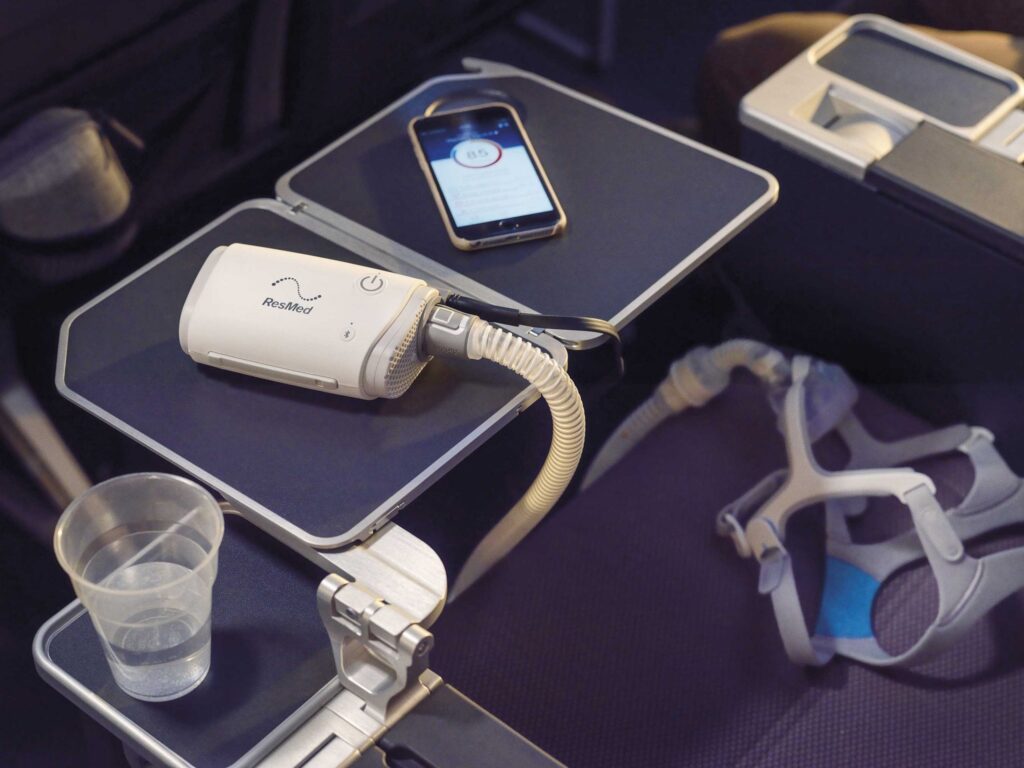
But what sets the ResMed AirMini apart from other portable CPAP machines? Let’s take a closer look at its key features.
Key Features of the ResMed AirMini
Before diving into the tips for optimizing your experience, it’s important to familiarize yourself with the key features of the ResMed AirMini. These include:
Compact Design
The AirMini’s compact size is perfect for travel and on-the-go use.
HumidX and HumidX Plus
These innovative waterless humidification systems provide added moisture to prevent dryness and discomfort.
SmartStart and SmartStop
These features enable the device to automatically start and stop when you put on or take off your mask, eliminating the need for manual adjustments.
Quiet Operation
The AirMini operates quietly, ensuring you and your bed partner can enjoy a peaceful night’s sleep.
With these key features, the ResMed AirMini offers a convenient and effective solution for managing sleep apnea while on the go. Whether you’re traveling for work or pleasure, you can rest easy knowing that your therapy needs are taken care of with this portable CPAP machine.
Setting Up Your ResMed AirMini
When you first receive your ResMed AirMini, it’s important to follow the initial setup process to ensure optimal performance. Here are a few steps to get you started:
- Unbox the AirMini and familiarize yourself with its components.
- Charge the device fully before first use.
- Connect the AirMini to your mask of choice using the appropriate adapter.
- Adjust the settings according to your personal preferences and therapy needs.
Setting up your ResMed AirMini is an exciting process that marks the beginning of your journey towards better sleep and improved health. As you unbox the AirMini, take a moment to appreciate its sleek design and compact size. The device is carefully crafted to provide you with a comfortable and effective therapy experience.
Once you have familiarized yourself with the components, it’s time to charge the AirMini. Plugging it into a power source and watching the battery indicator light up fills you with anticipation for the nights of restful sleep that lie ahead.
Now comes the moment of connection. As you attach the AirMini to your mask of choice, you can’t help but imagine the transformative power it holds. This small device, when combined with the right mask, will deliver a continuous stream of air, keeping your airways open and ensuring a peaceful night’s sleep.
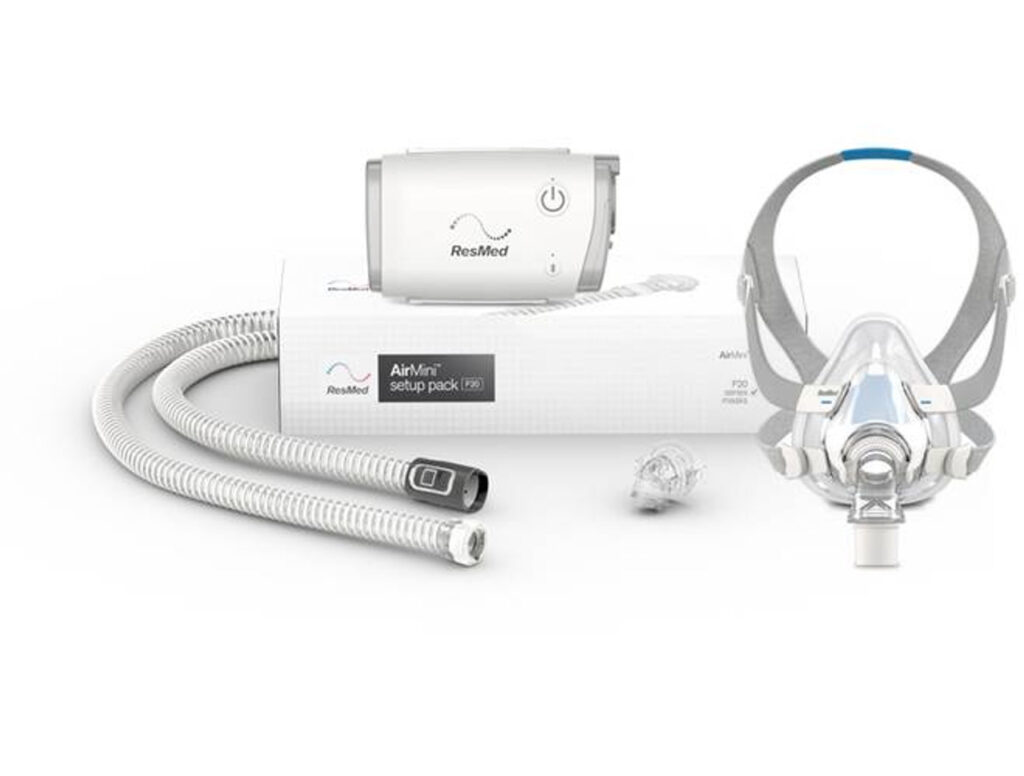
With the physical setup complete, it’s time to delve into the settings. The ResMed AirMini offers a range of customization options to suit your individual needs. As you navigate through the menu, you have the opportunity to tailor the device to your personal preferences and therapy requirements.
Personalizing Your Settings
Customizing the settings of your ResMed AirMini can help improve your overall comfort and ensure an optimal therapy experience. Here are a few tips for personalizing your settings:
- Experiment with different mask styles and sizes to find the one that fits you best. The AirMini is compatible with a variety of masks, allowing you to choose the one that provides the perfect fit and seal.
- Set the pressure to the recommended level prescribed by your healthcare provider. This ensures that you receive the appropriate amount of air pressure to keep your airways open and prevent interruptions in your breathing.
- Explore the options for humidification and adjust according to your preference or needs. The AirMini offers different levels of humidification to help alleviate dryness and enhance your comfort during therapy.
- Take advantage of the SmartStart and SmartStop features for added convenience. With SmartStart, the AirMini automatically starts therapy as soon as you breathe into the mask, eliminating the need to press any buttons. SmartStop, on the other hand, pauses therapy when the mask is removed, allowing you to easily resume when you put it back on.
As you personalize your settings, remember that the ResMed AirMini is designed to adapt to your unique requirements. Take the time to explore the various options and find the combination that works best for you. With each adjustment, you are one step closer to enjoying a restful night’s sleep and waking up refreshed and rejuvenated.
Maintenance and Cleaning Tips for ResMed AirMini
The ResMed AirMini is a compact and portable CPAP device that provides effective therapy for sleep apnea. To ensure the longevity and performance of your AirMini, it’s crucial to follow a regular cleaning routine. By properly maintaining your device, you can enjoy clean and fresh air throughout your therapy sessions.
Regular Cleaning Routine
Following a regular cleaning routine is essential for the optimal functioning of your ResMed AirMini. Here are some key steps to keep in mind:
- Disconnect the mask and tubing from the device before cleaning. This will allow you to clean each component thoroughly without any obstructions.
- Clean the mask, tubing, and waterless humidification system according to the manufacturer’s instructions. Each component may require different cleaning techniques, so it’s important to follow the guidelines provided.
- Regularly replace the filters to maintain optimal air quality. Over time, the filters can become clogged with dust and debris, reducing the effectiveness of the therapy. By replacing the filters as recommended, you can ensure that you’re breathing in clean air.
- Store the AirMini in a clean and dry environment when not in use. This will help prevent the accumulation of dust and ensure that the device remains in good condition.
By incorporating these cleaning practices into your routine, you can prolong the life of your ResMed AirMini and enjoy uninterrupted therapy.
Troubleshooting Common Issues
Occasionally, you may encounter issues with your ResMed AirMini. Here are some common problems and their solutions:
- If you experience air leaks, ensure that your mask is properly adjusted and fitted. A loose or improperly sealed mask can result in air leaks, which can affect the effectiveness of your therapy. Adjust the straps and reposition the mask to achieve a secure fit.
- If the device is not turning on, check the power connection and charge level. Ensure that the power cord is securely plugged into the device and the power source. If the battery is low, connect the device to a power outlet and allow it to charge.
- If you notice excessive noise, inspect the filters for any debris or blockage. Dust and particles can accumulate on the filters, causing the device to produce louder noises. Remove the filters and clean them thoroughly to eliminate any obstructions.
- If you are still encountering difficulties, contact ResMed customer support for further assistance. Their knowledgeable team can provide guidance and troubleshooting tips to resolve any issues you may be experiencing.
Remember, proper maintenance and regular cleaning are key to ensuring the optimal performance of your ResMed AirMini. By following these tips, you can enjoy a comfortable and effective sleep apnea therapy experience.
Maximizing Comfort with Your ResMed AirMini
Adjusting for Optimal Comfort
One of the key factors in optimizing your experience with the ResMed AirMini is ensuring maximum comfort during sleep. Here are a few suggestions to help you achieve optimal comfort:
- Make sure your mask is properly adjusted and fits snugly without causing any discomfort or air leaks.
- Experiment with different sleeping positions to find the one that allows for the most comfortable and unrestricted sleep.
- Utilize the humidification features of the AirMini to prevent dryness or congestion.
- Consider using additional accessories like mask liners or cushions for added comfort.
Tips for a Good Night’s Sleep
Aside from optimizing your ResMed AirMini experience, implementing good sleep habits can greatly improve the quality of your rest. Here are a few tips for a good night’s sleep:
- Establish a consistent sleep schedule and stick to it.
- Create a relaxing bedtime routine to signal your body that it’s time to sleep.
- Avoid electronic devices and stimulating activities before bed.
- Create a comfortable sleep environment by minimizing noise, light, and temperature disturbances.
Utilizing the ResMed AirMini App
Navigating the App Interface
The ResMed AirMini app provides …
Read MoreLooking to use your CPAP machine during winter
Using a CPAP (Continuous Positive Airway Pressure) device is an effective treatment for obstructive sleep apnea. Depending on the time of year and where you are located, you may need to adjust your CPAP treatment accordingly. For example, more humidity in the air during summer may make CPAP therapy more comfortable, as it prevents airways from drying out. On the other hand, during autumn and winter, less humidity in the air may worsen symptoms of inflammation and dryness. CPAP Direct Australia offers a wide selection of CPAP machines, CPAP masks, and nasal pillow masks, so you can find the perfect device for your CPAP therapy. Most CPAP masks use air pressure to keep the airways open throughout the night, and are designed to be as comfortable as possible:
- Dry nose
- Bleeding nose
- Dry mouth
Dry mouth, throat, and lips
The outcome of all this inflammation may be increased nasal airway resistance (NAR), which raises the possibility of a mouth leak and reduces the effectiveness of your CPAP treatment.
What can you do to prevent dryness in the winter?
1) Use the CPAP machine with a heated humidifier tank
Using a CPAP device is the most common treatment for obstructive sleep apnea and other sleep disorders. A heated humidifier, which warms the water and provides moisture to the CPAP machine’s airstream, is often used in conjunction with the CPAP machine. By changing the heat, you can adjust the moisture levels to suit your needs. If you buy cpap machine online please get some necessary information before buying.

Research shows that CPAP patients who use heated humidifiers have higher therapeutic efficacy than those who do not use them. CPAP Direct Australia offers a variety of CPAP masks, from nasal pillow masks to nasal masks, to suit the needs of most users.
Three types of heated humidifiers exist:
- Built-in Humidifiers – Many CPAP machines have a built-in humidifier, which makes it a single device and requires less space than adding an external heated humidifier.
- Integrated Humidifiers – These humidifiers are designed to be used with CPAP machines and connect directly to them. This is a practical solution for travel or other needs.
- Internal Humidifiers – This type of humidifier has a heating element and is used with CPAP machines. The chamber may be removed for cleaning, despite being built in.
2) Employ heated tubes
When using a Continuous Positive Airway Pressure (CPAP) machine to treat Obstructive Sleep Apnea, condensation inside the tubes, also known as “rainout”, can be an issue, especially when the bedroom is cold. Fortunately, the chance of this happening is reduced when the humidity is increased, as is done with the use of heated tubing in most CPAP masks and devices. CPAP therapy is commonly used in Australia, and CPAP Direct offers a range of CPAP masks, devices, and treatment options to choose from, including the popular Nasal Pillow Mask and the Nasal Mask.
3) Boost the humidity level
Different manufacturers have different humidity control settings. If you need assistance, speak with your sleep care clinician.
4) Humidity and temperature in the bedroom
When you have been diagnosed with sleep apnea, a common treatment is to use a new CPAP machine. To get the right CPAP machine for you, you should speak to your sleep doctor about the pressure settings that are best for you. If you are looking for a machine with two pressure settings, then a bilevel machine or BiPAP machine may be the best option. If you only need one pressure setting then an APAP machine may be a better choice.

To make sure you get a good night’s sleep, adjust the pressure settings, and the sleep position, and make sure the temperature in your bedroom is not too low and add a humidifier. This is important as condensation may form within the tubing and mask if the air from the CPAP is warmer than the ambient room temperature, which can cause skin irritation.
5) Use distilled water instead of regular water
It’s crucial to use distilled water when using a CPAP humidifier to guarantee there are no bacteria or mineral pollutants. This is a crucial safety precaution that will also lengthen the lifespan of your CPAP machine.
6) Stay hydrated
To keep your nasal passages moisturized throughout the day, drink plenty of water.
7) Use nasal lubricants with petroleum-free bases
Use a water-based lubricant to stay hydrated, such as Biotene for dry lips or Secaris for dry nose. Avoid using petroleum-based items since they might harm your CPAP machine.
8) Check the fit of your CPAP mask
If you have been diagnosed with sleep apnea, you should speak with your sleep doctor to ensure you are using the right CPAP machine and that it fits properly. There are different types of CPAP machines – including APAP and BiPAP machines – which provide different levels of pressure and may be more suitable for some patients. Your doctor can also adjust the pressure settings to ensure you get a good night’s sleep. Additionally, your doctor may suggest other solutions such as a new CPAP machine, lower pressure settings, or a bilevel machine that has two pressure settings. Common treatment issues such as skin irritation, claustrophobia, dry mouth, air leakage, and sleep position can also be addressed during your visit.
Here are some vital pointers for improving your CPAP compliance success:
1) Inform Yourself
As a newly diagnosed sleep disorder patient, the importance of being informed about the right CPAP machine for you cannot be overstated. Speak with your sleep doctor to learn about the pressure settings and what type of machine best suits your needs – whether it’s a BiPAP, APAP, or a bilevel machine. Knowing your sleep position and skin irritation concerns, as well as how a lack of good sleep affects your overall health, will help you focus on using your CPAP machine. For those using a BiPAP or bilevel machine, understanding how two pressure settings can improve your sleep is a must. For those with a single-pressure machine, such as an APAP machine, understanding the lower-pressure settings is key. Don’t forget to read the instruction manuals that came with your CPAP machine and ask questions as they arise – these steps will help you become an informed CPAP user and get the best treatment possible for a good night’s sleep.
2) Check Out Your Gear
CPAP (Continuous Positive Airway Pressure) machines are used to treat Obstructive Sleep Apnea, and are available in Australia. Some of these machines come with a RAMP function, which allows users to start the night at a lower air pressure and increase it to the recommended level after they have drifted off to sleep. This extra feature may help novice CPAP users to adjust to the pressure and their CPAP mask. Once they have become comfortable with the CPAP device, they can switch off the extra functions. There are many different kinds of CPAP masks, such as the Nasal Pillow Mask and the Nasal Mask, and most of them are available at CPAP Direct.
3. Begin slowly
Using a CPAP (Continuous Positive Airway Pressure) machine is an effective way to manage obstructive sleep apnea. CPAP therapy in Australia includes wearing a CPAP mask while breathing in air pressure from the machine. It is recommended to start slowly with the CPAP treatment and become accustomed to the air pressure. The most common CPAP masks include nasal masks and nasal pillow masks. CPAP Direct offers a range of CPAP masks to suit different needs. As you become comfortable with the CPAP device and wearing the mask, you will find that you are able to sleep and relax more easily.
4) Adhere to a sleeping schedule
Utilizing a CPAP machine as part of your nightly routine is an important part of treating obstructive sleep apnea. Continuous Positive Airway Pressure (CPAP) therapy uses air pressure to keep your airways open, allowing you to breathe normally. Although this may be challenging to adjust to, it is vital to stick to your regular sleep schedule.

This helps your mind and body to recognize that CPAP treatment is a requirement for getting adequate rest. Most CPAP masks, such as nasal pillow masks and nasal masks, can be purchased from CPAP Direct or CPAP Australia. If you find it difficult to adjust to the CPAP device and pressure machine, you can adjust your practice to suit your needs.
5) Try using a humidifier
Many CPAP machines in Australia are available to treat Obstructive Sleep Apnea, and with them come the potential for dry lips, eyes, and nostrils. This discomfort can be quickly and easily solved by using a humidifier, which can be built into the device or adjusted to the individual’s preferences with settings. CPAP (Continuous Positive Airway Pressure) therapy is a common treatment for those with sleep apnea, and most CPAP masks and devices, such as those available at CPAP Direct, provide the necessary air pressure to improve breathing and sleep. The nasal pillow mask and nasal …
Read MoreTravel easily with your CPAP machines with these tips
You must bring your CPAP machines, which is a device often used to treat sleep apnea, everywhere you travel if you need it. Fortunately, traveling with CPAP machines need not be difficult, though some models make it easier than others.
Many individuals mistakenly believe they may skip using positive airway pressure while they are on vacation, at work, or for other reasons, so they merely leave their cpap machines at home for a few days. It was a thought to package and transport their equipment.
However, sleep apnea still progresses whether or not you take your medication. You run the danger of experiencing all the unfavorable and sometimes even harmful consequences of untreated sleep apnea, which CPAP is intended to stop.
The good news is that traveling with cpap machine is much easier than you may imagine. Utilizing your therapy in certain situations doesn’t even need electricity.

It doesn’t take much preparation to bring a portable CPAP machine on a trip. However, there are a few things you must take care of before your departure date;
Traveling with more modern machines shouldn’t be difficult since they are often small, light, and come with carrying bags. However, there are CPAP machines that are even more useful and portable that are made especially for travel. If you travel often, it might be wise to invest the money on a second device that is specifically designed for travel.
Make sure the proper power adaptors are available.
Being unable to keep your potentially life-saving equipment operating is terrible news, but finding you can’t charge your phone when you are at a spot is unpleasant enough. Always double check that you have the correct connectors and adapters for your location. Traveling overseas shouldn’t be a problem since almost all current electronics have universal power supplies that can adapt to various voltages.
If you’re flying, make sure you have a paper copy of the airline’s clearance. Your device, if you have one, conforms with the carrier’s standards and guidelines. Dealing with TSA agents, flight attendants, and X-ray machines will be simpler as a result. Always carry a letter from your doctor confirming that you need CPAP therapy.
Buy a portable CPAP device.
You may decide to check your travel CPAP in with the rest of your luggage if you’re traveling by air. CPAP machines are not considered a carry-on bag since it is a medical device, even if you bring it inside the airplane cabin. It is also best to bring your smartphone on the trip in case your luggage gets misplaced.
Most CPAP machines may be carried without any issues. However, if you often travel or spend a lot of time outdoors, such as while hiking and camping in the hills, transportable CPAP machines may be beneficial. These devices might be as small as a Coke can, and some of them could even run on sunlight.

Modern CPAP machines are more compact, lighter, and include a travel bag. This variant, sometimes referred to as “small,” is much simpler and easier to carry when traveling. A wonderful example of this sort of gadget is the ResMed Airmini.
You may wish to consider purchasing or renting a backup battery pack. These are great for camping trips or even simply as a backup plan in case of power outages.
Contact your airline if you’re interested in learning more about using a CPAP while flying. Some airlines need at least 48 hours’ notice before deploying an in-flight CPAP machine to ensure that your model conforms with FAA guidelines and regulations. The right labeling of your equipment must state that it meets with FAA safety regulations and is approved for use on flights, according to many airlines’ requirements.
Think on what’s available locally or bring extra pieces.
Find out in advance where you can acquire replacements if required when you get at your destination if your journey will last more than a few days. If that isn’t possible, bring extra parts like extra mask cushions and maybe even a backup power supply.
Prepare the vehicle for the voyage.
Always ensure that the device is packed safely. It must not be damaged in any way while being transported. Take use of any travel accessories provided. Before a vacation, always remember to thoroughly empty the humidifier chamber and allow it time to dry. This will lessen the likelihood of spills and safeguard the equipment from damage.
Why you must always have your CPAP with you
If you use CPAP machines, you already know how important it is to use it every single night. This makes it imperative that you bring it with you when you travel. Use breaks might lead to setbacks in your therapy. Additionally, when we sleep in unfamiliar areas like a hotel room, your cousin’s house, or even a tent, the quality of our sleep is often worse than it is at home.
According to study, a part of our brain really stays awake when we sleep in unexpected places in order to act as a kind of “night watchman” and keep an eye out for dangers. This suggests that the amount of stress in the room has already reached a high; don’t add to it by turning off your device before bed.
Because you have sleep apnea, you shouldn’t be denied the same quality of life as everyone else. No matter whether it is for business or pleasure, travel is an essential part of the human experience. If having a little bit extra equipment is the difference between having peace of mind and sleeping through the night worried, it’s a little price to pay. Take ownership of the car and drive off.

Travel tips for your CPAP machines
Before you pack, make sure your CPAP equipment is dry.
To avoid mold and mildew, empty the water chamber from your humidifier and make sure CPAP machines and accessories are fully dry before transporting them.
Bring extra CPAP supplies.
Pack additional supplies like mask cushions, headgear, and filters even if your vacation is just a short one. Nobody wants to play MacGyver merely to get a decent night’s sleep since these supplies have a habit of breaking when you need them the most.
Ensure you have a copy of your prescription.
Although you probably won’t need it, you’d be happy to have it if you needed to change cpap machines online or mask while on vacation.
Bottled water may be your ally.
You should carry some bottled water even if you’re staying at a five-star hotel since you never know when or where you’ll be able to get distilled water. Because tap water (and even spring water) includes minerals that might build up in your machine and eventually cause it to break down, it’s crucial to only use distilled water in your CPAP.
This is crucial if you’re visiting a place where it’s suggested not to drink the native water. You probably shouldn’t breathe in tap water if it isn’t safe to consume it.
Buy plenty of CPAP wipes.
You shouldn’t use all your bottle of water on cleaning your CPAP equipment. To keep your mask and machine clean, use CPAP wipes, which are quick and simple to use. Additionally, the alcohol-free composition works well with equipment other than CPAP machines!
Verify You Have the Correct Power Source
You could discover that your power cable is incompatible with the local power outlets if you’re going abroad. The majority of contemporary CPAPs will automatically compensate for the different voltage (110v in the United States vs. 220v in the majority of Europe), however you’ll probably require an adaptor to match the outlet.
Purchase an extra battery pack.
You can never predict what could happen on the road, even if you’re traveling to a place with plenty of electricity. Your flight might be delayed. Maybe there aren’t any outlets at your campground. Perhaps there is a power outage at your accommodation. Having a few batteries on hand will assist safeguard your sleep hygiene against unanticipated issues.
Invest in a DC Converter
A DC converter is a low-cost technique to increase the variety of your power source choices. With the aid of DC adaptors, you are able to use solar panels, USB ports, cigarette lighter-style outlets, even automobile batteries to power your CPAP or recharge its battery.
Final thoughts
It could be challenging and takes some getting used to to sleep with a mask on each night. There is, however, no reason why users shouldn’t continue living as normally as they can after they grow adjusted to wearing the device. Additionally, utilizing a CPAP for sleep apnea treatment shouldn’t prevent someone from flying.
… Read MoreUse your CPAP machines easily with these tips
Everybody’s CPAP adjustment is unique. While some people acclimatize to their therapy right away, others take longer to feel comfortable.
Here are some essential guidelines for utilizing CPAP machines and mask while trying to get some rest:
1. Start your sleep therapy gradually.
Remember that the goal is for therapy to become a crucial part of your health that you use every night. Getting cpap machines is the best course of treatment for you right now, but you’ll only benefit from it if you use it regularly.
It’s crucial to become used to and feel comfortable with CPAP machines. If you can, consider using your sleep aids while you are awake a few times during the day.
A great way to start is by using CPAP machines while reading or watching television.

2. Verify your CPAP machine’s comfort.
Most therapy problems start when your mask does not fit properly. If your mask does not fit properly, you can find it difficult to fall asleep as fast as you should.
Our CPAP machines will have adjusted all of your equipment’s settings to suit your sleep apnea needs, but you may need to make a few small tweaks to your mask.
To improve comfort and the seal, you may adjust your mask during the day. Start by donning your mask and either standing or sitting in front of a mirror. Then, make any adjustments necessary to improve comfort.
After making any required changes for comfort, attach your mask to the CPAP machine tube. Lay down after which turn on the machine. Since your face shape changes while you are lying down, this step is essential to ensuring that the seal and comfort remain present.
On certain sleep apnea devices, the “Mask Testing” feature may be used to check the seal and comfort. If not, it would be a good idea to test the seal and comfort at a 10cmH2O CPAP pressure. 1 If, after making small adjustments to your mask, you are still having trouble obtaining a comfortable seal, you may need to contact us to have the fitting of your mask checked.
3. Establish healthy sleeping practices
You must first enhance your sleep hygiene in order for your sleep therapy to be as successful as feasible. Therefore, before starting sleep therapy, make sure you are following good sleep hygiene. Why is this important? This requires making sure that your daily activities, rituals, and practices are all conducive to providing you regular access to sound sleep.

You may improve your sleep hygiene by making a few little modifications to your routine and outlook.
4. The following suggestions may help you practice better sleep hygiene:
- Keep an eye on your physique.
- Your body’s internal clock can reliably determine when you’re ready for bed. Pay close attention to it, please!
- For instance, go to bed when your body signals that it is sleepy rather than waiting until you are physically exhausted. (See the part after this one for further details.)
- Get a good mattress and pillow to help you sleep better, and if you like to sleep on your side, look for pillows with certain designs that will make it simpler for you to use CPAP machine.
- The temperature in your bedroom should be between 16 and 20 degrees Celsius, and it should be dark, quiet, and comfortable.
- If you can’t handle the noise or brightness in your room, consider purchasing some earplugs and eye masks.
- Avoid social vices like beer, coffee, and phones before going to bed. These factors might all make it more difficult for you to obtain a good night’s sleep. 5
- Don’t go to bed until you’re completely worn out.
It’s important to just go to bed when you’re exhausted, as was said in the part above. When starting sleep therapy, this is also true.
If you go to bed when you don’t feel tired, you may not be able to relax. When something new and unpleasant, like CPAP machines, is installed, you could have a very difficult time falling asleep. If you worry about your mask and machine too much, you can have difficulties falling asleep.
6. Decompress before going to bed.
If your mind is busy, racing, or worried, it will be tough to fall asleep immediately away. You could begin to question your ability to fall asleep after you add your therapy tools and mask.
An hour or two before going to bed, do a few relaxing activities. Because we are all unique, follow your gut and do what seems right.
Consider taking a bath (the rise, then fall in body temperature promotes drowsiness)
7. Take a break by reading a book, watching TV, or practicing some relaxation methods.
Avoid engaging in stimulating or stressful activities, such as working or discussing your feelings. These kinds of activities may cause the body to produce the stress hormone cortisol, which has been associated to enhancing alertness. 6. If you often carry your anxieties to bed, try writing them down and putting them away. Additionally, avoid exercising just before bed.

8. Use the Ramp setting on CPAP machines.
There is a parameter on our computers called “Ramp.” Once you are in bed and wearing your mask, turn on your machine. If the air pressure from your machine appears too high and you are having problems falling asleep, utilize the “ramp” option.
In ramp mode, your device will begin with a low air pressure and gradually increase to a greater air pressure over time. As a consequence, you should be able to fall asleep before the air pressure reaches the correct level.
Verify the device’s model before using it, and if you have trouble falling asleep before the air pressure increases, speak with your ResMed Authorized Dealer about extending the ramp time. Here you may find a Dealer nearby.
9. Breathe in to go to sleep
Ideally, you will be at peace and worn out by the time you go into bed. Breathing exercises are the last thing to try at this time. The Sleep Foundation has a brief breathing practice that might help you relax and go to sleep.
10. Switch it off before going to bed.
If you use technology, such as texting, emailing, or browsing social media soon before bed, you could remain up longer at night. Even viewing television has been shown to promote alertness and mental activity, the exact opposite of what is needed to fall asleep.
All gadgets should be shut off an hour before bed. Your body and mind will benefit from this as you get ready for a restful night’s sleep.
Remember that it usually takes some getting accustomed to sleeping with CPAP machines and mask. Take it easy on yourself. If you heed the aforementioned advice, you will have a good chance of finding success with your sleep remedy.
Related: Travel easily with your CPAP machines with these tips
… Read MoreRecent Posts
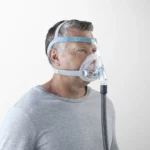 CPAP Masks Australia: A Comprehensive Guide to the Best Options AvailableContinuous Positive Airway Pressure (CPAP) therapy is a common and effective treatment for obstructive sleep apnea. One crucial component of this therapy is the CPAP mask, which delivers the airflow necessary to keep the airways open during sleep. In […]
CPAP Masks Australia: A Comprehensive Guide to the Best Options AvailableContinuous Positive Airway Pressure (CPAP) therapy is a common and effective treatment for obstructive sleep apnea. One crucial component of this therapy is the CPAP mask, which delivers the airflow necessary to keep the airways open during sleep. In […]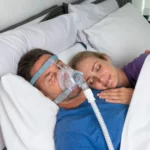 CPAP Mask Online Shopping: How to Ensure You’re Choosing the Right Mask for YouChoosing the right CPAP mask for your needs is essential for effective sleep apnea treatment. With the convenience of online shopping, it’s possible to find various options without stepping out of your home. However, the multitude of choices available […]
CPAP Mask Online Shopping: How to Ensure You’re Choosing the Right Mask for YouChoosing the right CPAP mask for your needs is essential for effective sleep apnea treatment. With the convenience of online shopping, it’s possible to find various options without stepping out of your home. However, the multitude of choices available […]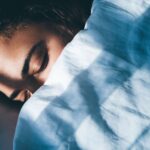 Discovering Your Sleep Type: The Benefits of a Sleep Type TestDo you often find yourself tossing and turning at night, struggling to fall asleep? Or maybe you drift off to dreamland effortlessly but still wake up feeling groggy and exhausted. If either of these scenarios sounds familiar, it's possible that you […]
Discovering Your Sleep Type: The Benefits of a Sleep Type TestDo you often find yourself tossing and turning at night, struggling to fall asleep? Or maybe you drift off to dreamland effortlessly but still wake up feeling groggy and exhausted. If either of these scenarios sounds familiar, it's possible that you […]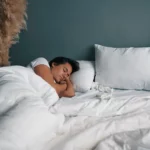 Sleep Apnea Testing in Brisbane: Your Complete GuideSleep apnea is a common sleep disorder that affects many people in Brisbane and around the world. If left untreated, it can lead to serious health complications. In this complete guide, we will explore everything you need to know about sleep apnea […]
Sleep Apnea Testing in Brisbane: Your Complete GuideSleep apnea is a common sleep disorder that affects many people in Brisbane and around the world. If left untreated, it can lead to serious health complications. In this complete guide, we will explore everything you need to know about sleep apnea […]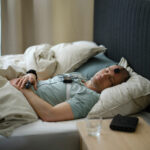 Sleep Study Ipswich: Analysing Sleep Patterns in QueenslandSleep is a fundamental aspect of our daily lives, yet it is often overlooked and undervalued. In recent years, sleep disorders have been on the rise, leading to a growing concern for public health. To shed light on this issue, a comprehensive sleep study […]
Sleep Study Ipswich: Analysing Sleep Patterns in QueenslandSleep is a fundamental aspect of our daily lives, yet it is often overlooked and undervalued. In recent years, sleep disorders have been on the rise, leading to a growing concern for public health. To shed light on this issue, a comprehensive sleep study […] Sleep Study Referral: Understanding the Process and RequirementsIn today's fast-paced world, getting a good night's sleep has become increasingly difficult for many individuals. From hectic work schedules to the constant distractions of technology, it's no wonder that sleep disorders are on the rise. If you're […]
Sleep Study Referral: Understanding the Process and RequirementsIn today's fast-paced world, getting a good night's sleep has become increasingly difficult for many individuals. From hectic work schedules to the constant distractions of technology, it's no wonder that sleep disorders are on the rise. If you're […]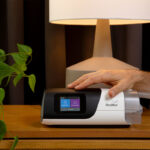 ResMed AirMini vs Traditional CPAP Machines: A Comparative AnalysisIn the world of sleep apnea treatment, Continuous Positive Airway Pressure (CPAP) therapy has proven to be highly effective in improving the quality of sleep for patients. CPAP machines work by providing a constant flow of air to keep the airways open […]
ResMed AirMini vs Traditional CPAP Machines: A Comparative AnalysisIn the world of sleep apnea treatment, Continuous Positive Airway Pressure (CPAP) therapy has proven to be highly effective in improving the quality of sleep for patients. CPAP machines work by providing a constant flow of air to keep the airways open […]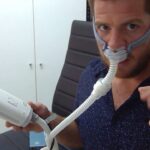 Tips for Optimizing Your Experience with the ResMed AirMiniThe ResMed AirMini is a compact and convenient device that offers a host of features to enhance your sleep experience. Whether you are new to using this device or looking for ways to improve your current setup, this article will provide you with valuable […]
Tips for Optimizing Your Experience with the ResMed AirMiniThe ResMed AirMini is a compact and convenient device that offers a host of features to enhance your sleep experience. Whether you are new to using this device or looking for ways to improve your current setup, this article will provide you with valuable […] Eye Surgery, LASIK vs Contact Lenses: Which One Should You Choose?Eye surgery, LASIK, or laser vision correction. The procedure goes by many names, but regardless of what you call it, LASIK surgery is one of the most popular permanent options for those with poor vision. But while laser eye surgery works for various […]
Eye Surgery, LASIK vs Contact Lenses: Which One Should You Choose?Eye surgery, LASIK, or laser vision correction. The procedure goes by many names, but regardless of what you call it, LASIK surgery is one of the most popular permanent options for those with poor vision. But while laser eye surgery works for various […]![Is Laser Eye Surgery Worth the Cost? [Complete Guide]](https://mhsblogs.com/wp-content/uploads/2023/05/LASIK-SMILE-and-PRK2-150x150.jpg) Is Laser Eye Surgery Worth the Cost? [Complete Guide]You may be considering going for laser eye surgery soon. The entire laser eye surgery procedure is quick and painless and eliminates the need for glasses or contact lenses for a very long time. However, laser vision correction can also be expensive. […]
Is Laser Eye Surgery Worth the Cost? [Complete Guide]You may be considering going for laser eye surgery soon. The entire laser eye surgery procedure is quick and painless and eliminates the need for glasses or contact lenses for a very long time. However, laser vision correction can also be expensive. […]
